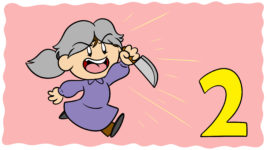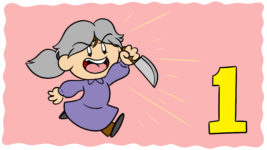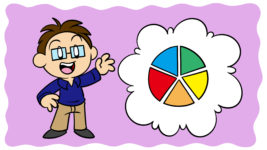It’s probably due to the nature of fairy tales that villains are often thought of as one of the key ingredients of a story. We learn from childhood that a good tale has a hero trying to resolve a situation despite the opposition of a villain. It makes for a great story, but as this recipe follows us into adulthood, it starts to become less useful.
Villains have a firm place in writing, but that doesn’t mean that fantastic stories can’t be created without them. More importantly, it’s possible that the presence of a villain in your story is holding it back.
Hero vs villain
Villains are narratively useful because they are an easy source of conflict for writers, whereas other sources of conflict can be much harder to write. We’ve all read or seen terrible narratives where the hero faces a series of increasingly unlikely setbacks with no common cause, stretching the reader’s credulity far past breaking point.
It’s so common that author Lemony Snicket was able to form an entire series out of mocking the idea – in his A Series of Unfortunate Events books, only the three protagonists are aware that their suffering is the work of the villainous Count Olaf, while the adults happily accept every attempt on their lives as an odd coincidence.
Certainly it’s often easier to have a villain be the source of all your hero’s suffering, but if you can learn to write conflict without a villain then you open the door to incredibly nuanced forms of storytelling.
The false assumption
Villains so often seem necessary because of a single false assumption.
This assumption is that the hero starts off in a world where their efforts are expected to bring about the resolution they require: the hero is capable of bringing about Thing A and the villain fights to stop them.
To employ an easy example, the heroes of The Lord of the Rings wish to destroy a cursed ring by taking it to a far off location, and quickly meet resistance in the form of the ring’s owner and his minions.
Assuming that the heroes are capable of achieving their goal, the villain makes perfect sense – without them there is no conflict between the desires of the hero and the progression of the story – however it’s an assumption which doesn’t have to be correct.
Conflict through situation
A hero can quite easily be placed into a situation, or situations, where their desired resolution is incredibly difficult for them to achieve. The conflict in these stories comes from this pre-existing difficulty, rather than difficulties created by a villainous character.
In Nick Hornby’s Funny Girl the main character, Barbara, wants to be a comedienne in a society where such a role does not seem possible for a woman. Not only is this goal difficult to achieve, but the reader is privy to the hurdles of Barbara’s own doubts and worries.
In the following extract, Hornby wrings conflict from Barbara winning a beauty pageant and realizing that it is not enough, and she will have to leave home to pursue her dreams.
She didn’t feel anything. Or rather, she noted her absence of feeling and then felt a little sick. It would have been nice to think that she’d been wrong, that she didn’t need to leave her father and her town, that this was a dream come true and she could live inside it for the rest of her life. She didn’t dare dwell on her numbness… but when her father came over and hugged her she burst into tears, which was her way of telling him that she was as good as gone, that winning Miss Blackpool didn’t even come close to scratching the itch that plagued her like chickenpox.
– Funny Girl, Nick Hornby
No villain is needed for the conflict of this scene. By focusing on Barbara’s strong emotional reaction, how her current situation differs from the one she desires, and what she will lose in pursuing what she wants, Hornby creates an incredible sense of strife.
Protagonists can struggle against a range of things; a hostile world, a difficult dream, a philosophical problem, but as long as the reader witnesses and appreciates that struggle, it will be just as compelling as if they were struggling against a villain.
Employing minor antagonists
The key to showing conflict without a villain is to focus on the protagonist’s emotions, but sometimes you need to use another character to really drive the point home. This can be done through the use of minor antagonists.
In Lewis Carroll’s Through the Looking Glass the main character, Alice, struggles against a world gone mad. A logical being, she finds herself at odds with a world and people who she can’t understand. Underlying the events of the story, however, is the theme of adulthood. It is a recurring motif that as a child Alice is ‘safe’, but that her encroaching adulthood is a threat to her youthful innocence and, in the world of the story, her wellbeing.
This theme is subtle, and in Carroll’s style of writing would be difficult to achieve without the use of other characters – the point, after all, is that Alice does not see the ‘danger’. To heighten the sense of threat and conflict, Carroll uses minor antagonists to point out and exemplify his themes.
Minor antagonists differ from villains in that they are not the chief (or even a major) source of conflict, but are used to highlight the true source. In the following extract, Humpty Dumpty subtly jokes that Alice could avoid aging if someone were to kill her.
“Seven years and six months!” Humpty Dumpty repeated thoughtfully. “An uncomfortable sort of age. Now if you’d asked my advice, I’d have said ‘Leave off at seven’ – but it’s too late now.”
“I never ask advice about growing,” Alice said indignantly.
“Too proud?” the other enquired.
Alice felt even more indignant at this suggestion.
“I mean,” she said, “that one can’t help growing older.”
“One can’t, perhaps,” said Humpty Dumpty; “but two can. With proper assistance, you might have left off at seven.”
– Through the Looking Glass, Lewis Carroll
Humpty Dumpty is not being villainous here – he poses no threat to Alice – but his comments do highlight the idea that she is not safe within the world of the story. He is antagonistic in so much as he highlights the antagonism the world holds towards the protagonist.
In Funny Girl, Barbara’s aunt plays a similar part. Her disapproval of Barbara’s dreams is not an obstacle, but is used to highlight that society at large does not approve of or understand what Barbara wants.
Introducing villains
By now it should be clear that there are many sources of conflict outside the villain, and that characters can be used to stress or heighten that conflict without being the cause of it. For many writers, this will be a great starting point for nuanced and complex work, but there is one more thing that a great writer should consider.
This final consideration is that having a story where conflict does not stem from the villain does not preclude the presence of a villain. Your story can be about a character grappling with a deep, philosophical idea and also include a challenging and interesting villain.
This is the case in Roald Dahl’s Charlie and the Chocolate Factory. In this story a young, impoverished boy named Charlie wins a tour of a fantastical chocolate factory, accompanied by the owner and a quartet of obnoxious, affluent children who also won places on the tour.
Throughout the story the other children are shown to be unpleasant, both in terms of who they are and in the way they interact with Charlie. They are not simply minor antagonists, but are fully fledged villains who are so prominently unpleasant that their exits from the plot are accompanied by short songs from the factory workers.
Is she the only one at fault?
For though she’s spoiled, and dreadfully so,
A girl can’t spoil herself, you know.
Who spoiled her, then?
Ah, who indeed?
Who pandered to her every need?
Who turned her into such a brat?
Who are the culprits? Who did that?
Alas! You needn’t look so far
To find out who these sinners are.
They are (and this is very sad)
Her loving parents, MUM and DAD.
And that is why we’re glad they fell
Into the garbage chute as well.
– Charlie and the Chocolate Factory, Roald Dahl
Yet even once all the villains are dispatched the story continues. This is because Charlie’s struggle is not with the villains, but with the idea that the fantastical can have a place in his impoverished life. At the end of the story, it is revealed that the tour was a form of test, and having passed he is given ownership of the factory.
The villainous children were not the true source of conflict, but sprang from conflict inherent to the philosophical idea of a disadvantaged boy being able to ‘make it’. They are greedy, selfish, inattentive and boorish, exemplifying the societal attributes which would deny Charlie a chance in life.
In this story, Dahl masterfully starts with the complex, overarching concept of a young boy being given a chance at future prosperity. This is the source of conflict, and from it he summons villains who emphasize and embody that conflict without taking ownership of it.
This means that Charlie’s eventual victory has nothing to do with the villains – they are free to vanquish themselves. Instead of beating a villain, Charlie achieves his desired resolution by returning property which he believes he could sell for a huge sum. Dahl manages to employ the titillating qualities of interpersonal drama while actually drawing the story’s core conflict from the far deeper and more relatable concept of whether virtue can survive a hostile world.
Writers who would seek this level of excellence should ask themselves whether their plot could remain interesting if it continued long after the villain’s defeat.
Mastering conflict
As I have described above, learning to write conflict without a villain is really just the first step to writing conflict which transcends the characters of a story. Those who wish to master this can start by depriving themselves of villains for a while to focus their efforts on other forms of conflict. It can be difficult to master this kind of conflict, but it’s a style which will pay dividends down the line and (happily) you do get to bring the villains back later.
Once your conflict begins to centre around ideas rather than characters, you’ll be writing the kind of stories which stay with people for a lifetime. Works like A Christmas Carol, which has no villains, and To Kill a Mockingbird, which has several but draws its true conflict from the ideas of injustice and intolerance.
For more advice on the role of villains and antagonists in writing, check out The two secrets to writing a first rate villain and How to write a sympathetic villain.
Do you think a story isn’t complete without a great villain, or do you prefer your conflict metaphysical? Let me know in the comments.






10 thoughts on “How To Write Compelling Conflict Without A Villain”
Very interesting!
I am planning to write a novel that has no true villain. There will be “villains” of different kinds but it won’t be all black and white. I like this idea of metaphysical conflict.
In Snow by Orhan Pamuk there are many conflicting perspectives but nobody is singled out as the villain.
Hi Julia,
Thanks! I haven’t read Snow myself, but it sounds like exactly the kind of thing I’m talking about.
Best,
Rob
Thank you for this fascinating take on character and plot development. I was apprehensive about not having a clear-cut “villan” in my story: my heroes are victims of circumstance, with minor antagonists making things even more difficult. Now I see this is the right way to go, and feel more confident moving forward.
Hi A.K.,
That’s fantastic, I’m really glad it was of use to you.
Best,
Rob
Creative Non-Fiction is often about creating “story” suspense (without a “villain”) that holds the reader’s attention. Is the “idea” or the author trying to sell the idea the protagonist?
Hi maggy,
You’re right about non-fiction, but I’m afraid I don’t quite understand your question. Would you be able to rephrase it for me?
Best,
Rob
In my latest book, I used the Great Recession and the Dust Bowl to be the main conflict and threw in a minor villain to push the book’s main character to face the only resolution possible to his situation.
Hi Sharon,
An excellent example of what I’m talking about! Sometimes a circumstance or event can invite a huge amount of conflict on its own.
Best,
Rob
You referred me to this article and the character goal one, from the article about multiple antagonists. My character goals check out to be fine. This metaphysical struggle article has pushed me into having a big, timely think. My last book badly needs editing to bring out the struggle the main character is having in coming to terms with being a half-orc at puberty and growing tusks etc. I knew the internal struggle but need to write it in so that the reader feels it. The story is about him coming to terms with his orcishness.
You have alerted me to what I am doing in the book I am writing now, so I clarified my protagonist’s metaphysical struggle and looked into where her two closest friends stand with their attitudes. I stopped writing on. The protagonist developed quickly and I will go back and capture her transformation into her current mindset. Her change has set her as a person aiming for spiritual perfection in an imperfect world. She is putting the soul first and when the antagonist is working again her own soul, it is important to the protagonist not to. This means that she does not view the antagonist as a villain but as a disturbed soul who needs help to move on to the Otherworld so she can continue to spiritually develop. The clash between the protagonist and her friend is because the friend would see the antagonist as a problem to be destroyed or banished (and banishing is not so good as she could come back and maybe stronger when she does).
Thank you once again. I have listed five places in my story where I need to go back and push the significance of what is happening to my protagonist so that the metaphysical struggle will be significant. Also, this will put the spotlight onto my protagonist and stop her two friends from hogging it.
Your articles and comments are the best advice I have ever been given and have totally pulled me out of the tangle my mind was in after confusing critiques of my work from elsewhere.
Best wishes, Rosamund.
My pleasure, Rosamund, I’m really glad our articles could be so helpful, and I hope they continue to be so.